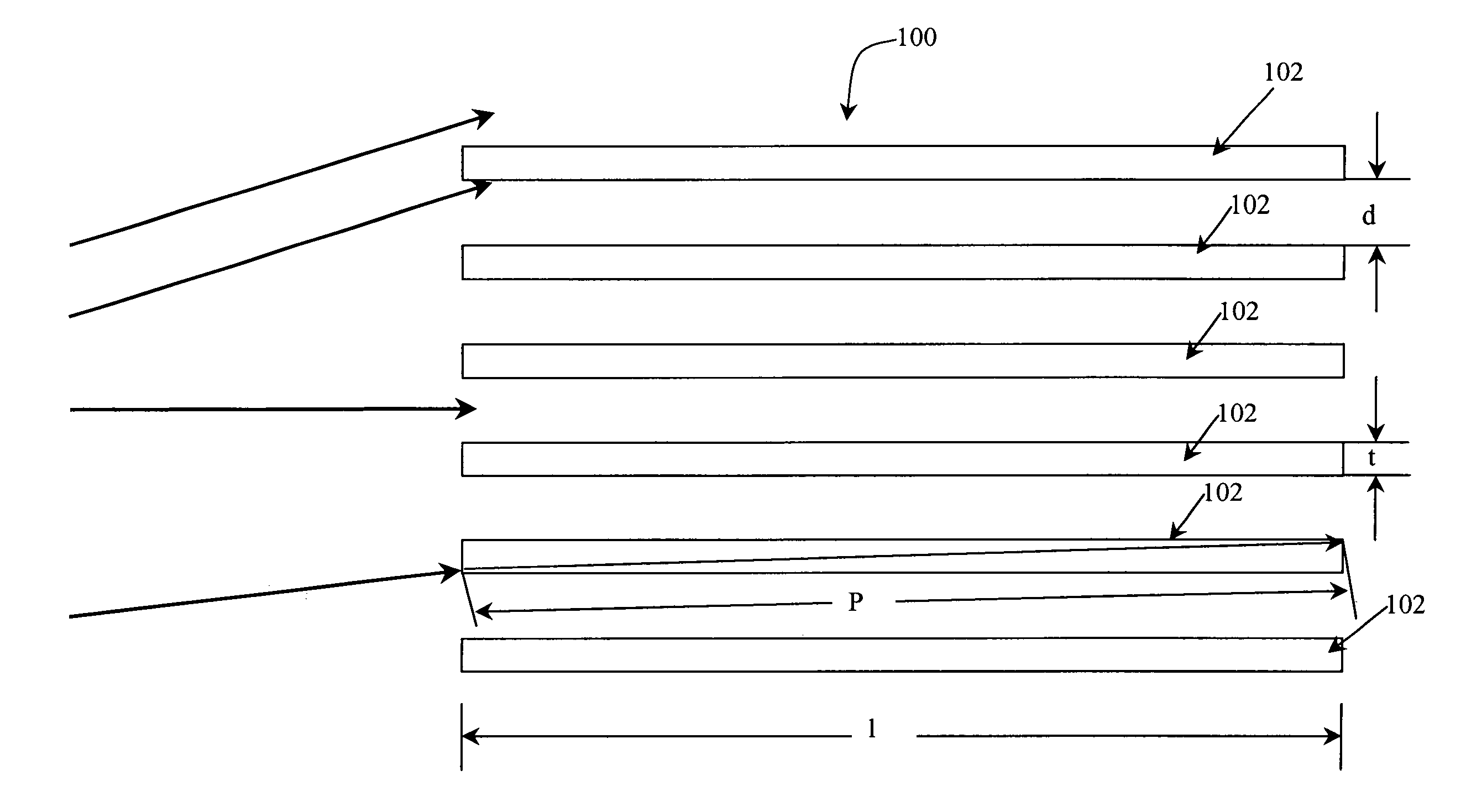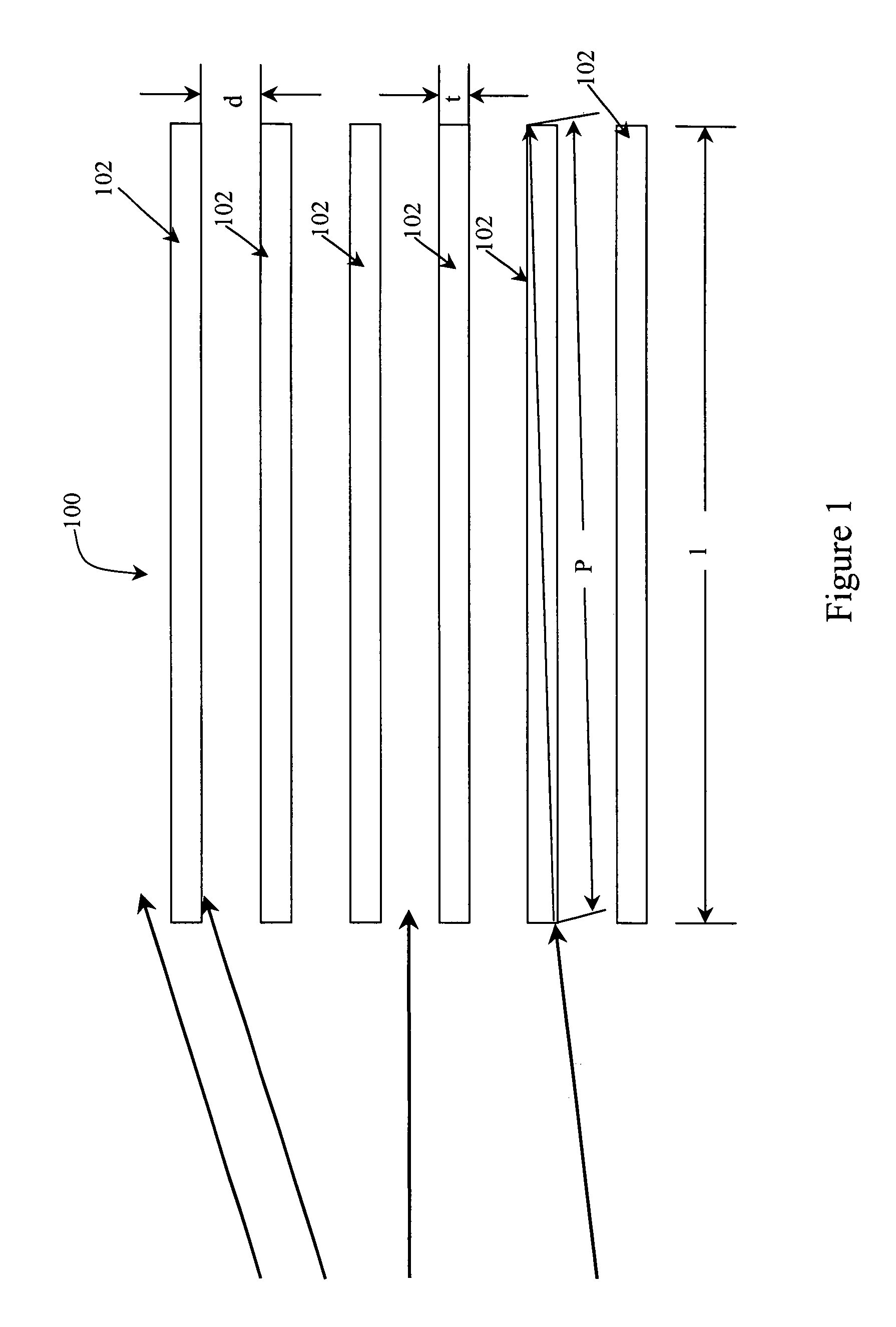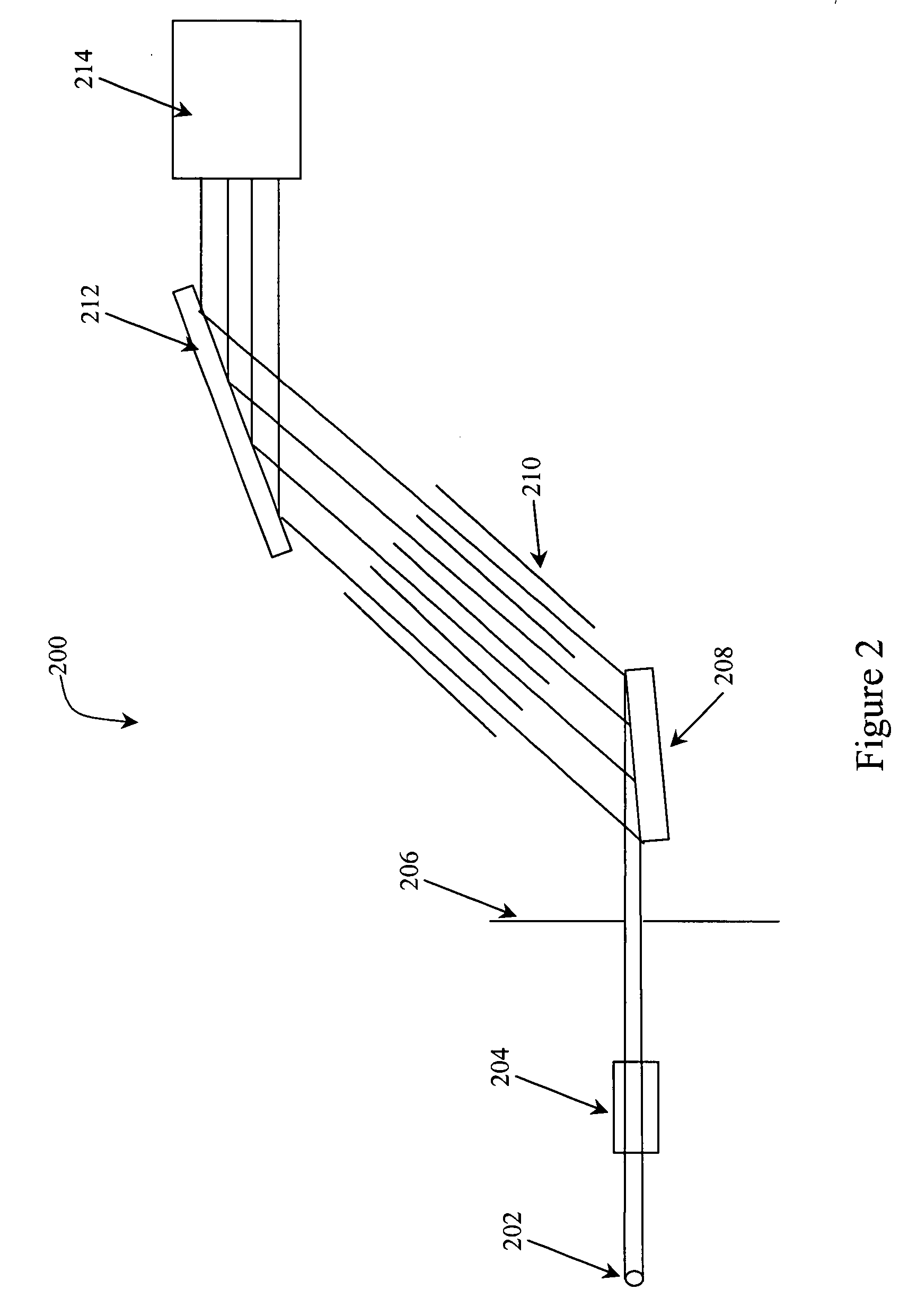Soller slit using low density materials
a low density, material technology, applied in the field of xray metrology, can solve the problems of large divergence angle, difficult control of the divergence of the beam of xray radiation, loss of well over half of the incident x-ray radiation on the device, etc., to achieve low density, increase transmission throughput efficiency, and low divergence
- Summary
- Abstract
- Description
- Claims
- Application Information
AI Technical Summary
Benefits of technology
Problems solved by technology
Method used
Image
Examples
Embodiment Construction
[0021]To facilitate an understanding of the principles that underlie the present invention, it will be described hereinafter with particular reference to embodiments thereof, and specific applications wherein it is used. It will be appreciated, however, that the practical applications of the invention are not limited to the particular embodiments described herein. Rather, the invention will find utility in a variety of different applications wherein a Soller slit X-ray collimator having a high transmission throughput efficiency and / or a low divergence is desirable. The present invention provides commercial advantages for multiple applications, as the Soller slit device of the present invention provides a greater transmission efficiency and a lower divergence angle than those associated with traditional optics used in high energy radiation applications, such as X-ray diffractometry.
[0022]FIG. 1 illustrates a Soller slit device 100. The Soller slit device is made up of multiple parall...
PUM
| Property | Measurement | Unit |
|---|---|---|
| thickness | aaaaa | aaaaa |
| length | aaaaa | aaaaa |
| blade length | aaaaa | aaaaa |
Abstract
Description
Claims
Application Information
 Login to View More
Login to View More - R&D
- Intellectual Property
- Life Sciences
- Materials
- Tech Scout
- Unparalleled Data Quality
- Higher Quality Content
- 60% Fewer Hallucinations
Browse by: Latest US Patents, China's latest patents, Technical Efficacy Thesaurus, Application Domain, Technology Topic, Popular Technical Reports.
© 2025 PatSnap. All rights reserved.Legal|Privacy policy|Modern Slavery Act Transparency Statement|Sitemap|About US| Contact US: help@patsnap.com



